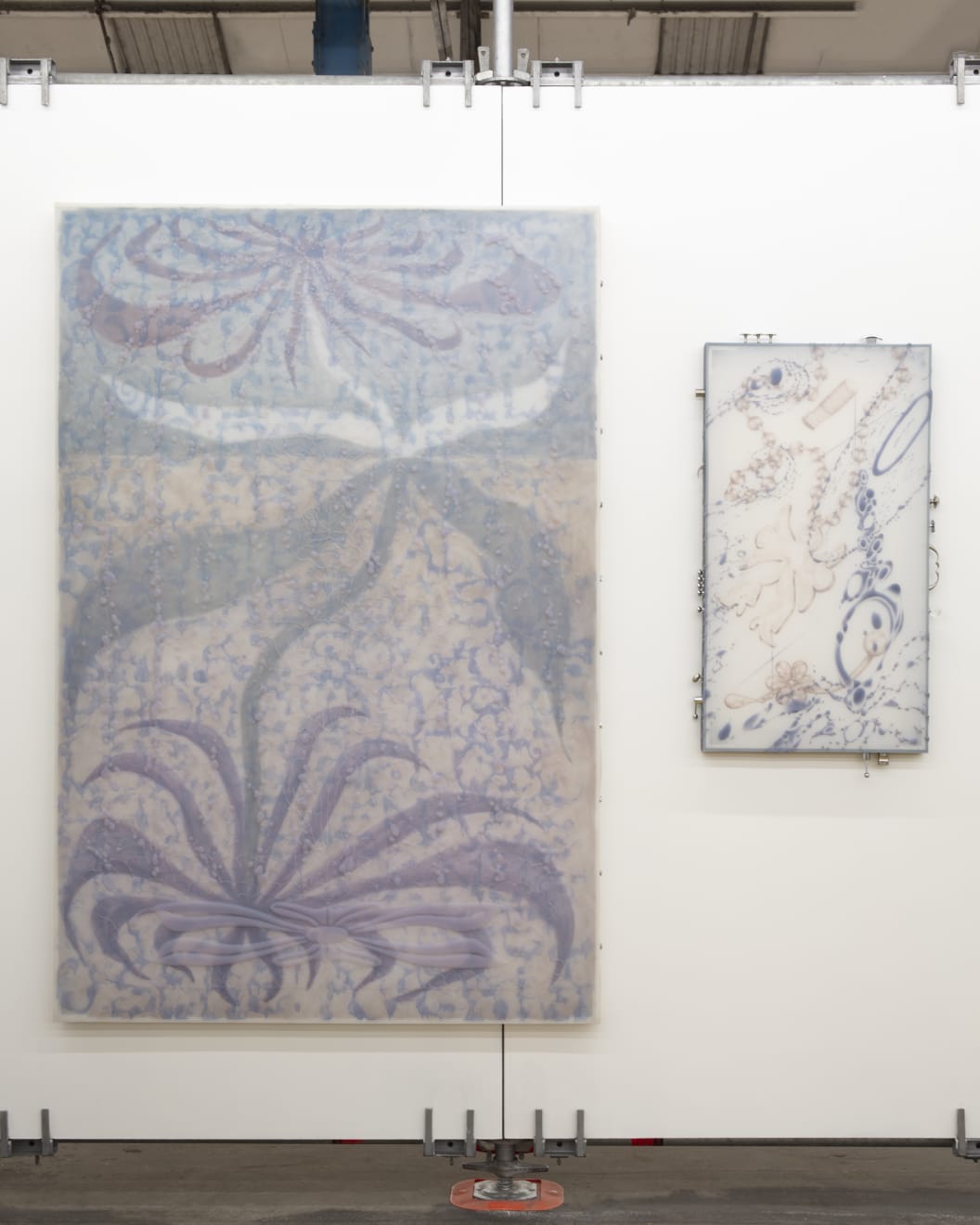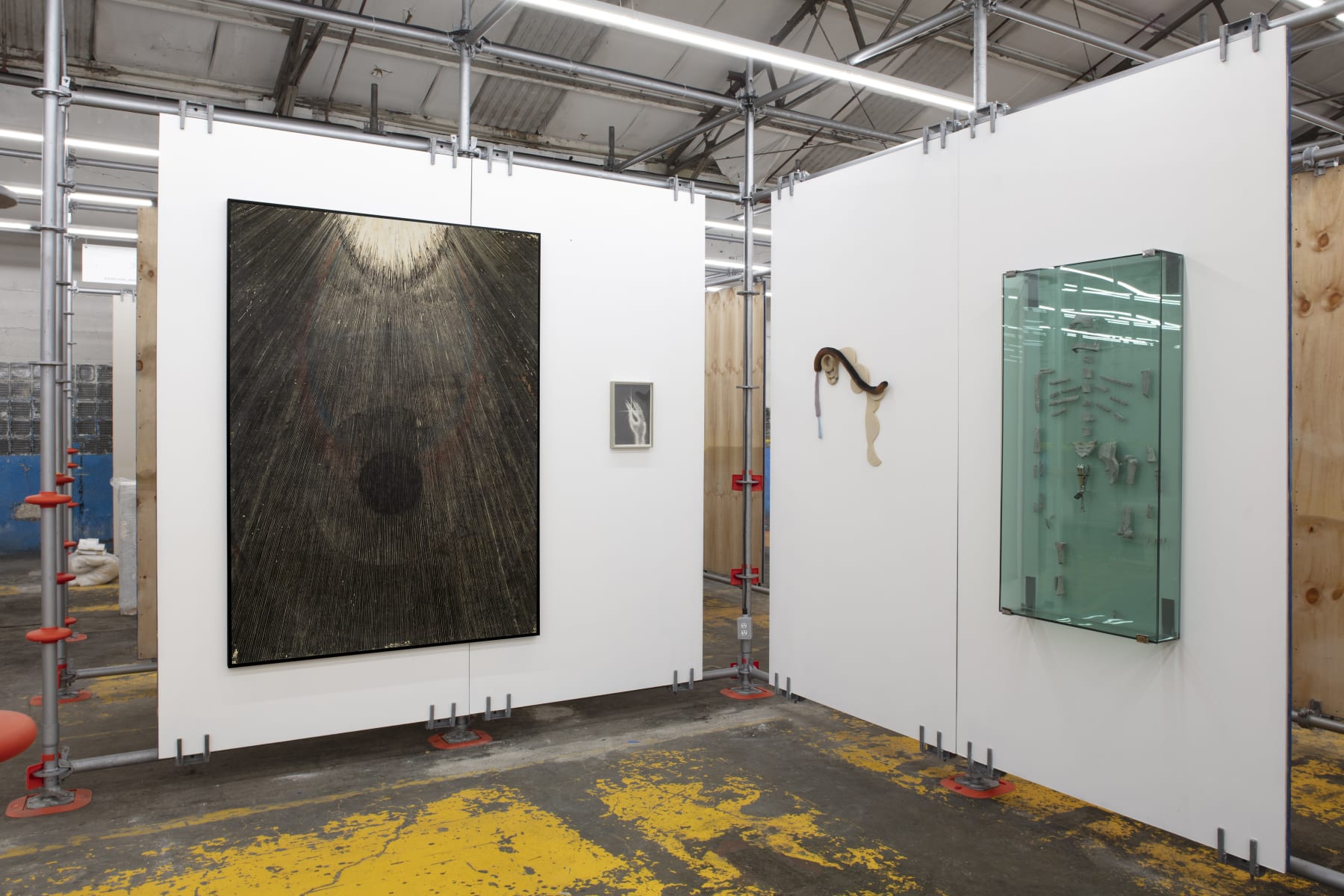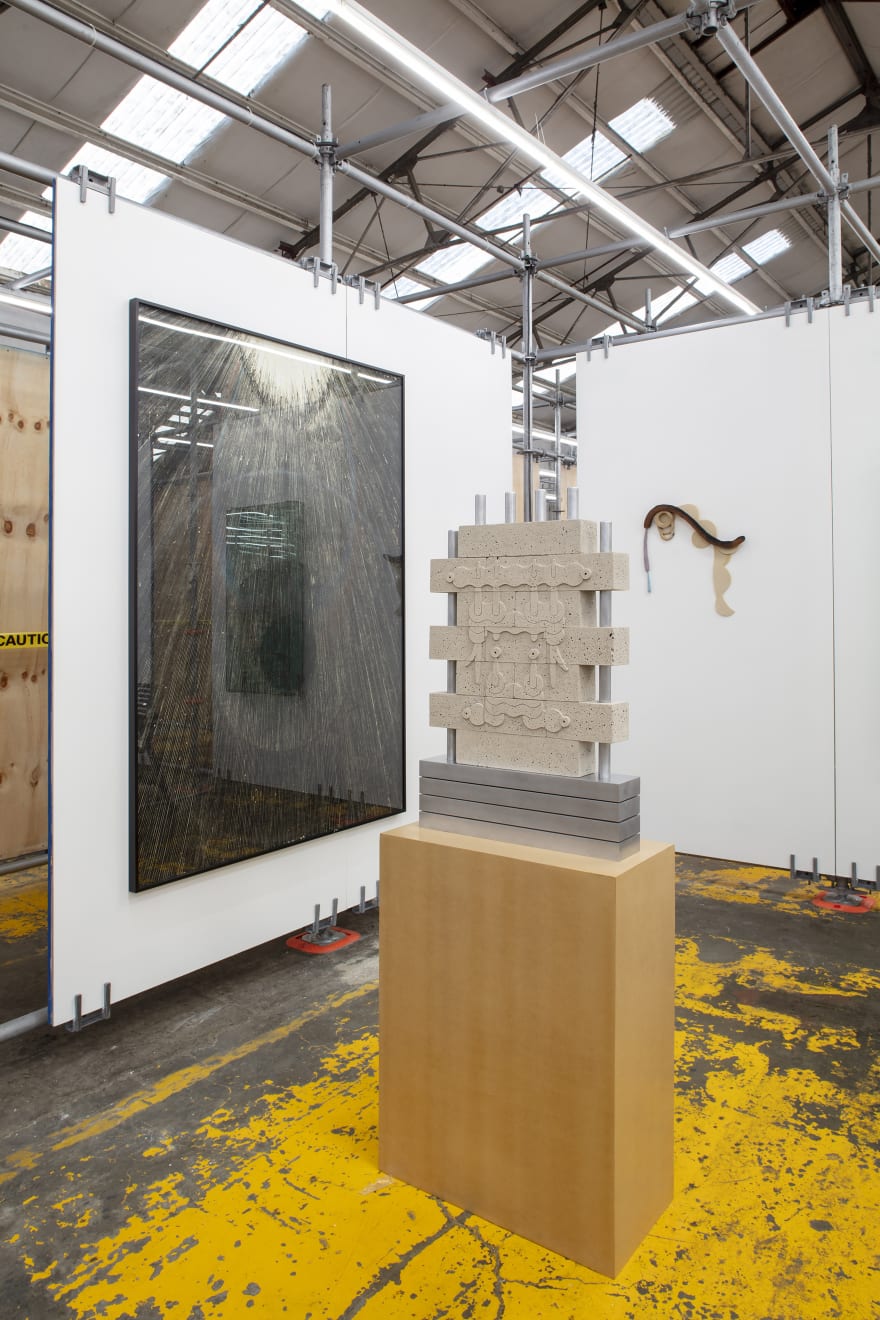Material Art Fair, Vol. 8: ASMA, Romeo Gómez López, Manuela de Laborde, Santiago Licata, Carlos H. Matos, Isaac Olvera, Jessica Wozny
For the 2022 edition of Material Art Fair, PEANA is pleased to present a sequence of installations featuring the work of A. Through the experimentation of industrial materials and artisanal processes, the works blur the borders between the natural and artificial, the past and the future, architecture and sculpture, tangible and imaginary elements.
One of ASMA's pieces references their most recent exhibit, Vain Kisses to the Source, which focused on expanding and reinterpreting the myth of Narcissus. This painting deals with two reflections: the echo and the shadow, being a literary exercise in constructing a palindrome with words from the translation to spanish of the original myth. In another series, the use of silicone, prefabricated aluminum and industrially produced objects, move away from the biologically human, however the pieces have an intimate, sentimental and vulnerable content, somehow full of humanity. Romeo Gómez López refers to Homo habilis, presenting his version of our extinct archaic ancestor with an alternative identity. Reflecting on the ephemeral and the permanent, this piece contrasts the materials that make it up and opposing ideas: evolution and religion, sexuality and reproduction, as well as pleasure and power.
Santiago Licata's work addresses themes that fuse the possible with the unlikely and the mundane with the fantastic. Commonly working with graphite on paper and pastels on canvas, Licata's works contain a world of vague apparitions and flashes, watery and vegetal motifs, crossed gazes and hand gestures. Manuela de Laborde's pieces evolve around a search to locate and isolate the concepts that are built around tangible elements. Pieces that were presented in dreams, thoughts behind the production of works, and the material as an object, but also as a concept and abstraction.
Through a process of increasing abstraction, Carlos H. Matos strips what could be architectural elements of most of their context, inviting a re-evaluation of their purpose and meaning and addressing what happens when architecture goes beyond the building format.
Jessica Wozny evidences the symbolic reconfiguration of internal organs to build a new subjectivity of the body from the diversification of media, articulating signs and representative elements of a metaorganism understood as expanded and tactile memory, as well as its capacity for dialogue and criticism from the micro to the macro in terms of scale and economy.







